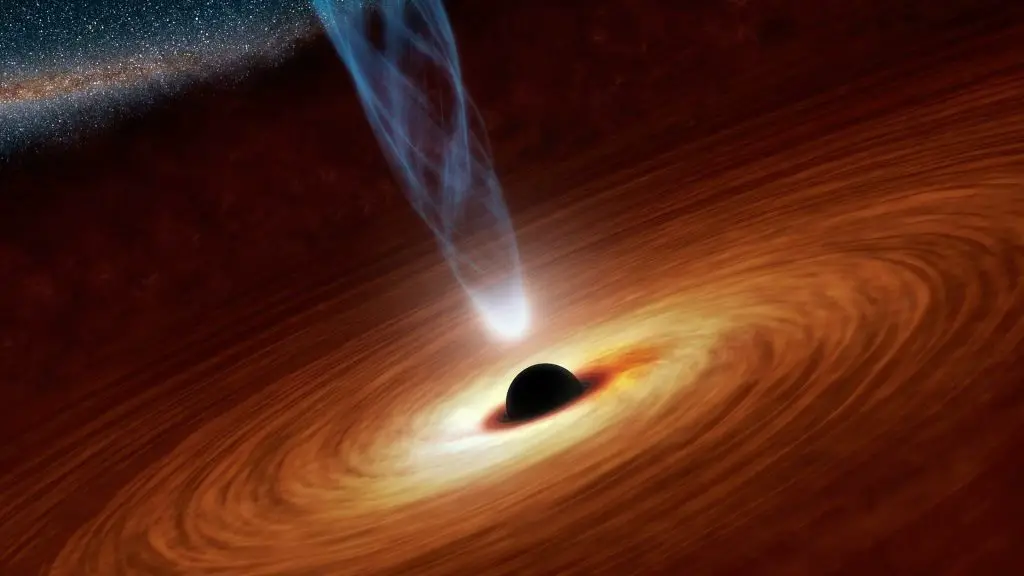Scientists recently studied the Circinus Galaxy which is one of the nearest galaxies to the Milky Way. Despite being so close to our home galactic world, astronomers kind of focused on other cosmic objects. Previous studies have enabled astronomers to discover that the Circinus Galaxy is located about 13 million light years away from Earth and it lies within the Circinus constellation. During the most recent observations, researchers provided enriched data to help us understand the process through which molecular gas consumes the supermassive black hole at the center of this galaxy.
The gigantic black hole located at this galactic center has a mass that is 100 times greater than that of the Sun. The observations carried out by the researchers revealed the first strong proof of mass accretion from an active galactic nucleus (AGN) on sizes smaller than a parsec.
Astronomers use parsec to define distances or events on a small cosmic scale. The team behind the study released an official statement, detailing their discovery.
“The findings present, for the first time, spatially resolved and robust evidence of mass accretion and feedback of an active galactic nucleus (AGN) on sub-parsec scales,” mentioned the press release.
How Astronomers discovered supermassive black hole Using ALMA Radio Telescope
The team conducted the observations using an ALMA radio telescope. They noticed that the supermassive black hole at the center of active galaxies often expands by absorbing matter from the neighboring galaxy.
Astronomers refer to the process through which a supermassive black hole progressively obtains matter from its surroundings known as mass accretion from AGN. It mostly comprises gas, dust, and other star material that are always pulled into the black hole’s gravitational influence.
Matter usually falls into the blackhole and it heats up leading to the release of radiation visible as an AGN. Since small angular diameters are involved, past observations and measurements cannot correctly spot the accretion process in the 10 parsecs. However, this recent study fills the gap of this lapse.
“Previous studies have shown that gas can be supplied from the interstellar medium of an entire galaxy to its central region – the area within ~100 parsecs of the core. However, little is known about how gas is delivered to the innermost area (< 10 parsecs) surrounding the black hole due to the extreme compactness of the region,” noted the official release.
How the team made the Discovery
The team of scientists from The Graduate University for Advanced Studies, SOKENDAI conducted the study using the Atacama Large Millimeter/submillimeter Array (ALMA) radio telescope to spot the active nucleus of the Circinus galaxy.
“Their observations had a spatial resolution ranging from 0.5 to 2.6 parsecs, and they supplemented their data with archival ALMA data,” the release stated.
The researchers obtained data on the movement of molecular, atomic, and ionized gas at the parsec scale from this observation. Their observations reveal that dense molecular gas flows into the AGN’s central parsec.
Their results reveal that the black hole is feeding on only a tiny amount of this input,less than three percent. The larger percent of it is emitted through “multiphase gas” outflows. Hence, these outflows create AGN feedback, which in turn, influences star formation within the host galaxy. Scientists are yet to fully understand the specific processes responsible for the sub-parsec accretion.
“While the processes responsible for the sub-parsec accretion described remains poorly constrained, the authors suggest that a gravitationally unstable dense gas disk could drive accretion to the central ~1 parsec,” the official release concludes.
The researchers published their findings in the journal Science.
Conclusion
Scientists recently studied the Circinus Galaxy which is one of the nearest galaxies to the Milky Way. The discovery also reveals how a supermassive blackhole at the galaxy’s center is feeding on the dense gas surrounding it. What do you think about this fascinating study? Check out some of these products from our Amazon affiliate links.




